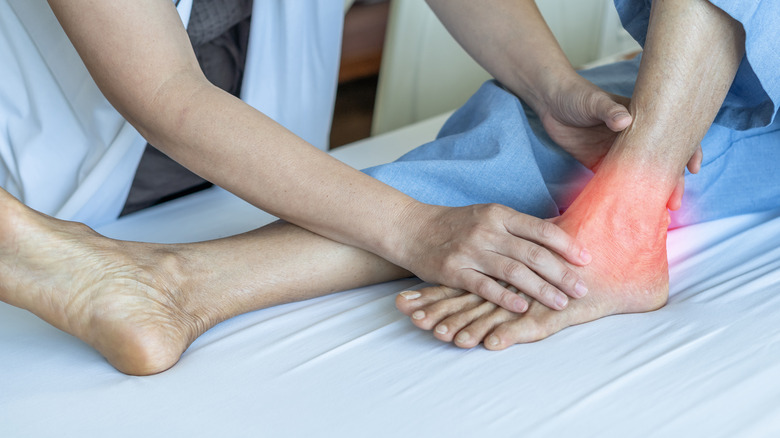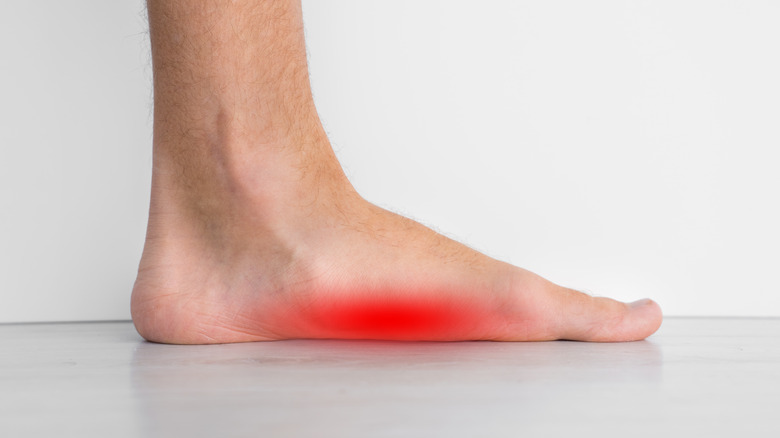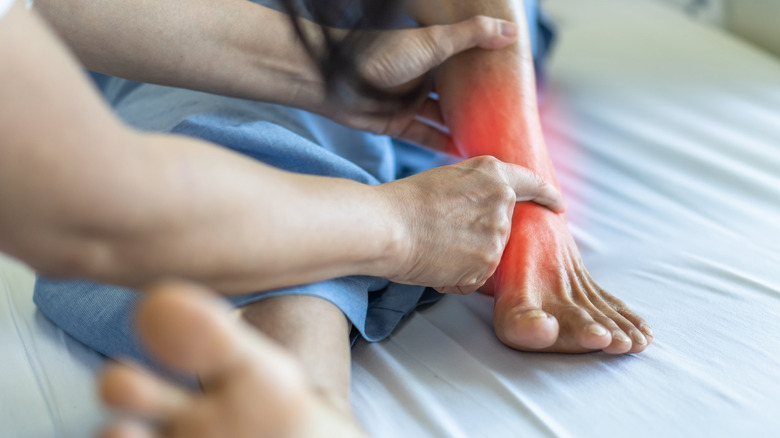Signs You May Have Posterior Tibial Tendonitis
Posterior tibial tendonitis, also known as posterior tibial tendon dysfunction (PTTD), is caused by the inflammation of the posterior tibial tendon — a major tendon that helps support the foot's arch and allows for proper walking (via OrthoNeuro). PTTD is caused by overuse or injury to the posterior tibial tendon (via Healthline). According to the source, the condition is more common in people who are female, over age 40, and obese. Other risk factors include health conditions like diabetes and high blood pressure.
According to the Cleveland Clinic, PTTD is usually classified into four stages based on the severity of the condition and the level of deformity in the foot. Stage I is mild — the posterior tibial tendon is injured in this stage, but the foot arch is still relatively normal. Stage II is moderate — the posterior tibial tendon becomes more damaged or torn, causing the foot to deform. Stage III is a more severe condition —the posterior tibial tendon is severely damaged, and the cartilage degenerates. In Stage IV, the ankle joints also deteriorate.
What are the common signs of posterior tibial tendonitis?
According to the Sports Injury Clinic, the symptoms of PTTD usually depend on which stage the injury is at. Early-stage symptoms include swelling, redness, and pain, which is especially more common along the inner side of the ankle and foot. According to Dr. Howard Green, the pain associated with PTTD might initially be intermittent; however, as it progresses, it will likely remain consistent. Healthline reiterates that the pain might get worse with activity, and its location might change with time.
In the later stages, the foot begins to collapse, with pain moving to the foot's outside section, says Sportsinjuryclinic.net. In addition to inflammation, this condition is usually accompanied by difficulty walking and standing for long periods, explains the Cleveland Clinic. It is important to seek medical attention if you notice signs of PTTD; early treatment can help prevent further damage to the tendon and help you recover more quickly.
How is posterior tibial tendonitis treated?
According to the Cleveland Clinic, treatment for PTTD will depend on how severe the condition is. Some people choose to apply ice to the affected area, which might help reduce swelling and numb the pain. They advise against taking part in painful or straining activities that might affect the tendon or delay its healing. Rather, low-impact exercises like swimming and yoga are a better choice. Physical therapy might help strengthen the muscles and tendons.
According to the American Academy of Orthopaedic Surgeons, braces and orthotics are common treatment options. They can help restore foot control and normal function as well as prevent the condition's progression by reducing stress on the posterior tibial tendon and improving foot alignment, per a 2018 article published by the American Orthopaedic Foot & Ankle Society. According to Healthline, nonsteroidal anti-inflammatory drugs (NSAIDs) can also help reduce swelling and pain. However, in severe cases of PTTD, surgery might be needed to repair or reconstruct the damaged tendon.



